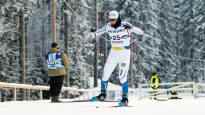At the opening of the Finnish Cup season on Saturday, attention will be focused on young promises. Urheilu’s expert Kalle Lassila expects Finnish sprinters to improve their level in the coming winter.
I streamed the Finnish Cup on TV2 on Saturday at 12:35 and on Sunday at 11:10.
The first competition of the Finnish Cup of Skiing season will take place this weekend in Vuokatti. On Saturday, the sprints will be skied in free skiing, and on Sunday it will be the relays.
In the women’s sprint, we will see the top sprinters Jasmi Joensuu, Katri Lylynperä and Jasmin Kähärä. On the other hand, the top names are missing from the men’s starting list. There is not, among other things Joni Mäkea, Lauri from Vuori and Verneri from Suho.
– The national team athletes just finished the high place camp. How the camp went and what the plan is after that has a lot to do with it. Urheilu’s expert says it’s not necessarily a good idea to open the competition season from Vuokatis Kalle Lassila says.
With many top names out, it’s worth paying attention to young promises. The opening races of the Finnish Cup have traditionally been stages where athletes unknown to the general public get to shine. Last year there was such a name Remi Lindholmwhose season became a breakthrough to the international level.
Thinking about Saturdays, Lassila brings up some interesting names Emil Liekarin, Eero Rantala and By Ike Melnits. Melnits, born in 2003, was fourth in the sprint of the under-20 World Championships last winter in the company of skiers a year older. At the European Youth Olympic Festival in Vuokatti, he won silver in the sprint.
When talking about the future promises of Finnish men’s skiing, names have often been mentioned Niilo Moilanen, Alexander Ståhlberg and Niko Anttola. Melnits has remained in the dark for the time being in speculations.
– Ike Melnits is a guy who has been talked about quite a bit. Out of our young names, he is the most sprint-oriented and successful guy there. He is among the best in the world in his age group in sprints. On a good day, he can be the best. You can expect anything from him.
According to Lassila, Melnitsi has the necessary factors for sprint skiing.
– He gets going really well in qualifying. In the youth series, he has been able to find speed capacity very well all the time.
– It’s always the first thing that makes it possible to rise to the international level at a young age. When you have the speed capacity, you can get straight to the points and heats with a hard qualifying ski. Melnits has been really strong in that, at least so far, Lassila praises.
Skiing to the points must be regular
Finnish sprint skiing enjoyed international success last season, when Johanna Matintalo and Joni Mäki reached the podium for the first time in the World Cup. In the Olympics, Mäki skied strongly, finishing fourth.
We also saw good performances from, among others, Katri Lylynperä and the young Jasmin Kähärä. On the men’s side, many young sprinters made it to the World Cup points from the beginning of the season.
Lassila expects that the young Finnish skiers who made it to the heats in the World Cup last season will regularly score points in the coming season.
– They are all expected to take a small step forward. It is also a fact that Russia is gone. In addition to that, the international top has narrowed enormously in the last 5–10 years.
– In practice, it means that for Finns who have skied for points, skiing in the heats must be basic. We should not discuss whether we will get points next season or not. It has to be basic, says Lassila.
Last winter, the Winter Olympics were skied approximately 1,800 meters above sea level. Along with the high altitude, the terrain and conditions were exceptionally tough.
At the World Championships in Planica, we return to so-called normalcy. The competition venue is approximately 1,000 meters above sea level.
– It makes it more of a normal sprint race. Last year, the conditions were so exceptional that the sprint skier needed to transform into a hybrid skier and partially a normal distance skier.
– In special conditions, sprint skiers don’t really have a division. Now there is a competition venue where sprinters who can do well on any track in the World Cup can succeed in prestigious competitions, Lassila adds.
